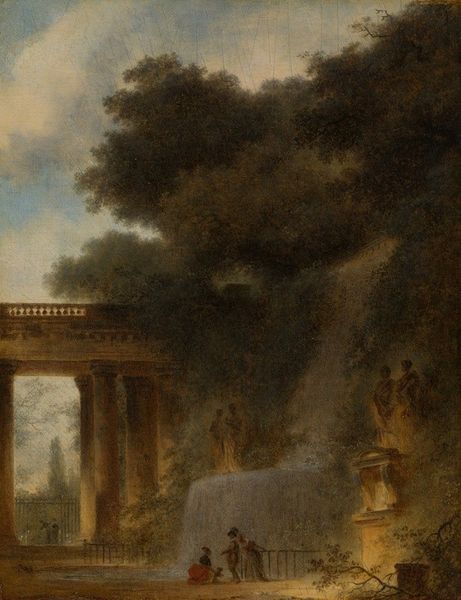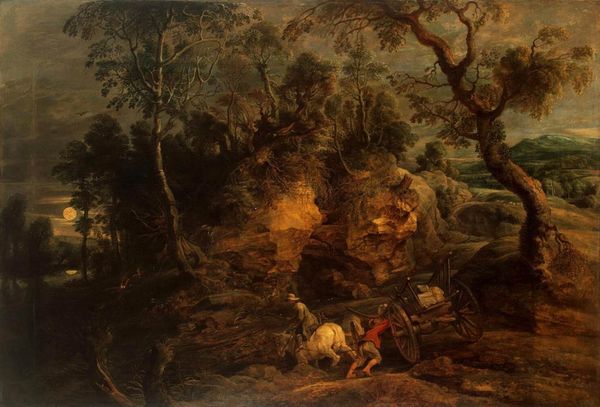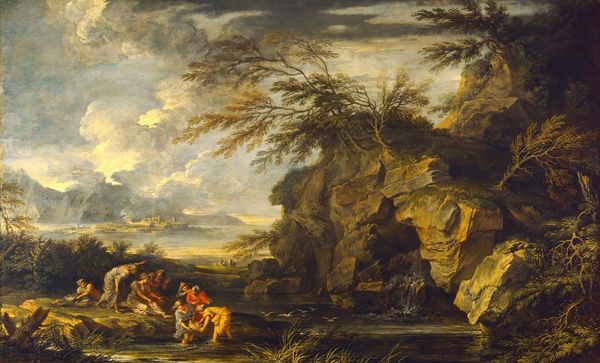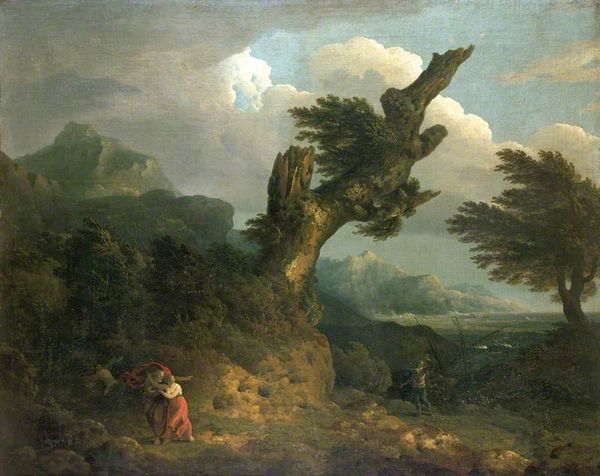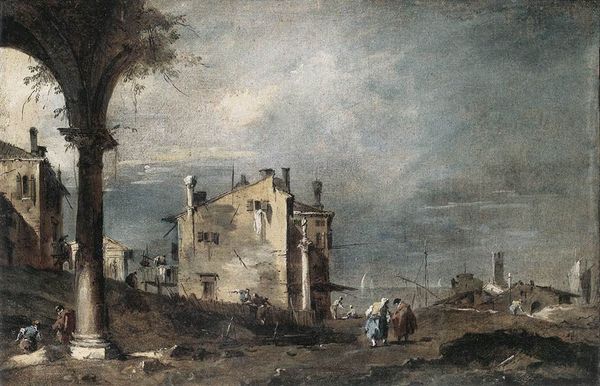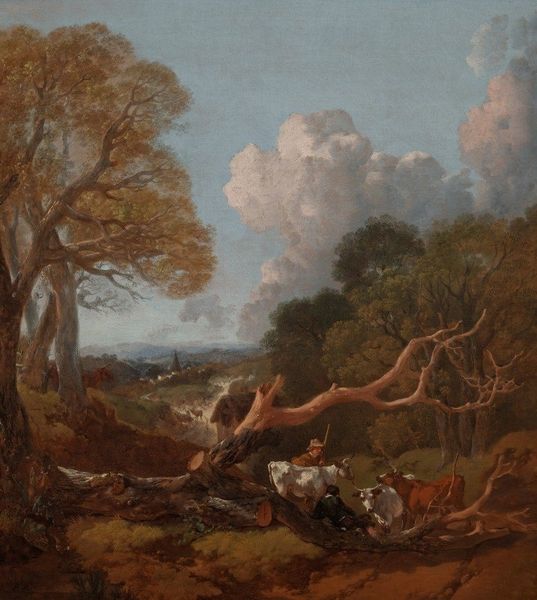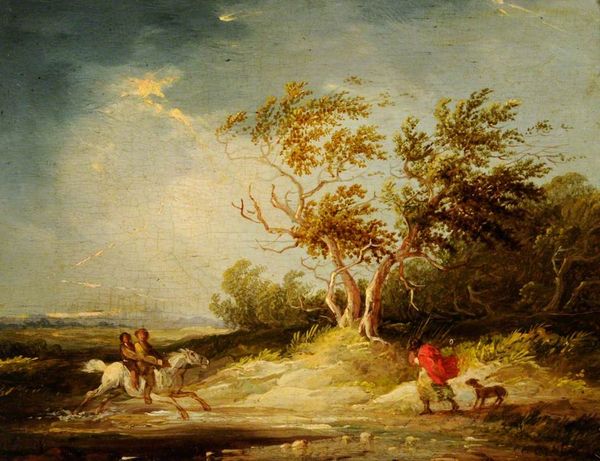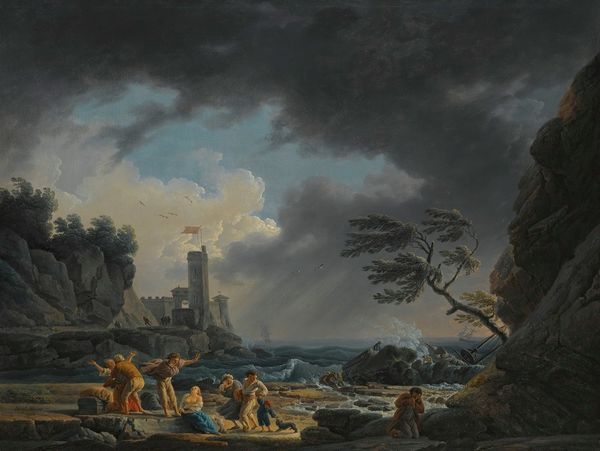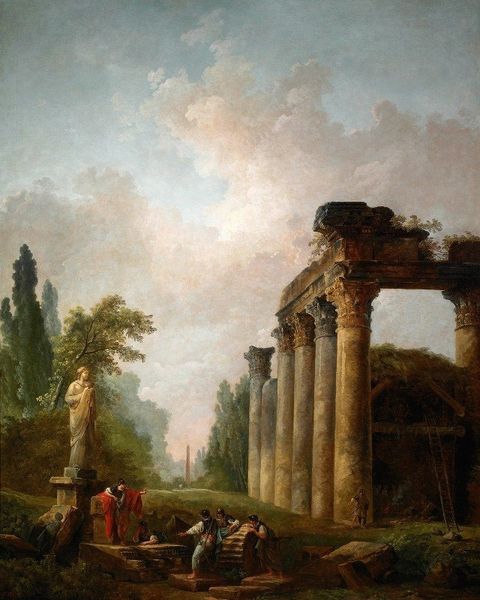
Copyright: Public domain
Editor: Here we have George Lambert’s “Stormy Seashore with Ruined Temple, Shipwreck, and Figures” from 1747, painted in oil. The scene is overwhelmingly dramatic; I immediately notice the tempestuous sky and the figures huddled in the foreground. What do you see in this piece, focusing on its form? Curator: Notice first the carefully orchestrated asymmetry. The ruined temple, dominating the left, is counterbalanced by the violently bent tree on the right. This creates a visual tension, further amplified by the contrasting textures: the rigid, decaying stone against the organic, yielding branches. Observe how the artist uses light, strategically placed, to guide the eye, creating depth through chiaroscuro, or contrast of light and dark. Editor: The composition seems designed to evoke a particular feeling, too, not just depict a scene. What is the artist trying to say here through the arrangement of these formal elements? Curator: Precisely. The storm serves as a powerful metaphor for the instability of human endeavors. Note how the formal properties—the broken lines of the temple, the chaotic brushstrokes representing the sea, and the submissive posture of the figures—all coalesce to emphasize transience and the limitations of humankind in the face of nature's sublime power. Can you discern a narrative progression based on the use of these formal cues? Editor: The broken temple and shipwreck hint at past grandeur, then the figures depict humanity humbled, and finally, nature's overwhelming power suggests where destiny truly lies. It's like Lambert structured the elements to narrate that idea. I see it clearly now. Curator: Indeed. The painting demonstrates that beyond historical depiction, the intrinsic elements convey philosophical narratives about time and nature. Editor: Thank you. Thinking about the work as a story told through its structure has offered a fresh perspective on appreciating the depth of the composition.
Comments
No comments
Be the first to comment and join the conversation on the ultimate creative platform.
